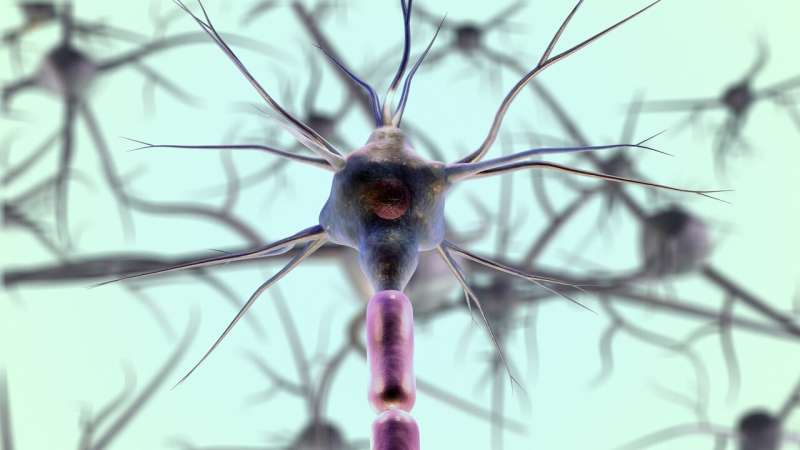This article has been reviewed according to Science X's editorial process and policies. Editors have highlighted the following attributes while ensuring the content's credibility:
fact-checked
peer-reviewed publication
trusted source
proofread
Earlier detection of a malignancy in neurofibromatosis type 1

Neurofibromatosis type 1 (NF1) is a common genetic condition, affecting 1 in 3,000 individuals, and people with NF1 are at greater risk of developing a rare, aggressive form of cancer. Diagnosing malignant peripheral nerve sheath tumors (MPNSTs) often comes too late, after the cancer has spread and is difficult to treat. But an international group supported by the NF Research Initiative (NFRI) at Boston Children's Hospital now know the genetic changes that characterize these tumors. Their findings may help with diagnosing the tumors as they transform from benign to malignant, and for determining better treatment approaches.
The group, led by David Miller, MD, Ph.D., director of the NFRI at Boston Children's, published their findings in Cancer Discovery on January 4, 2023.
The team collected 95 samples from MPNSTs all over the world for their study and examined the tumors' genetic makeups. "We can use the mutational architecture of the tumor as a signature for its presence, serving as an early diagnostic test. If you can detect a tumor when it is transitioning from benign to malignant, you have a better chance of treating it," says Dr. Miller.
The researchers found that tumors fall into two broad categories based on their molecular makeup—those that have or do not have a marker called H3K27me3. Tumors with H3K27me3 have a higher number of immune cells mixed in with the tumor cells, and people with that type of tumor tend to survive longer. This suggests that people with tumors that have the H3K27me3 marker might benefit from immunotherapy, since their immune cells can still infiltrate and attack the tumor. This opens new doors for the possible treatment of MPNSTs.
The researchers also found distinctive patterns in the DNA of the tumors, and these patterns could be detected in blood. Dr. Miller is now working to study whether a blood test could be used to look for genetic markers of evolving MPNSTs, which would be less invasive than traditional biopsies and lead to earlier detection and treatment of the cancer. "Once genetic changes happen in the tumor, we don't have a way to reverse that process. But we hope to use genetic testing to identify tumors like this early, and improve treatment," says Dr. Miller.
More information: Genomic patterns of malignant peripheral nerve sheath tumor (MPNST) evolution correlate with clinical outcome and are detectable in cell-free DNA, Cancer Discovery (2023). DOI: 10.1158/2159-8290



















